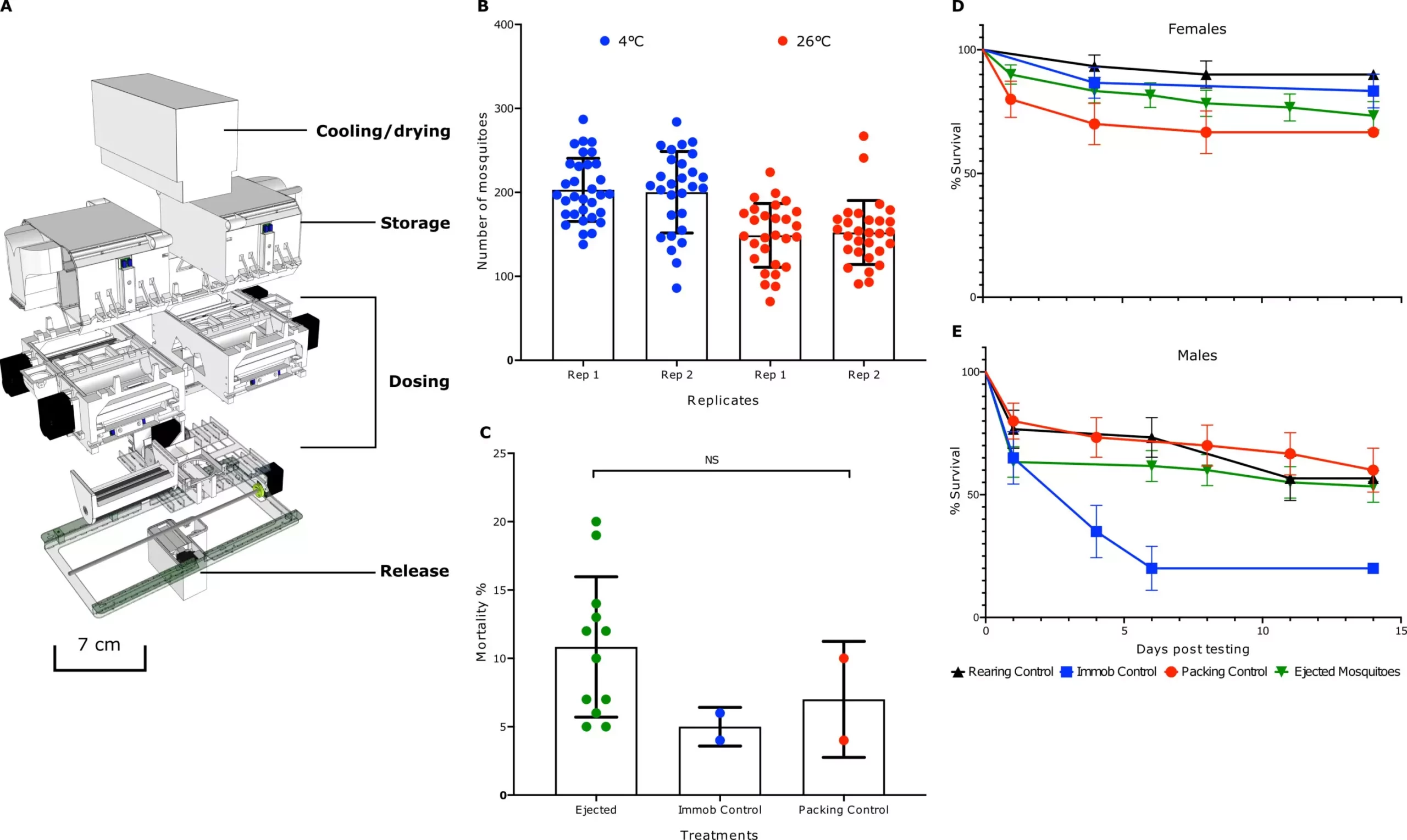Mosquitoes are more than just a pesky nuisance; they are vectors for some of the deadliest diseases known to humankind, including dengue fever, malaria, and Zika virus. This reality has set off alarms around the world as health officials strive to control mosquito populations and mitigate the spread of these often-fatal illnesses. Traditional methods for reducing these populations, such as insecticide spraying and manual release of modified mosquitoes, have shown limited effectiveness and carry their own risks. It is this complex landscape that has led to innovative technological solutions aimed at disrupting the life cycle of these hazardous insect populations.
Breeding Hope: The Role of Bacterial Infections
Recent breakthroughs in biological control strategies have revealed the potential of using bacteria to infectious species of mosquitoes. One of the most significant developments in this field is the identification of the bacteria Wolbachia, which effectively disables the reproductive capabilities of the mosquito population. When mosquitoes infected with Wolbachia breed, their offspring are less likely to survive. This strategy provides a dual benefit: not only does it reduce the population of disease-carrying mosquitoes, but it also minimizes the reliance on chemical insecticides, which can have adverse effects on ecosystems and human health.
Although breeding and releasing these modified mosquitoes manually have been the norm, it has proven to be time-consuming and logistically challenging. This reliance on labor-intensive methods poses safety risks as well, given the potential for exposing workers to mosquito-borne pathogens.
Drones to the Rescue: A New Era in Mosquito Control
Enter the World Mosquito Program and its innovative collaboration with WeRobotics, which has pioneered a groundbreaking approach that harnesses cutting-edge drone technology for mosquito release. In their recent study published in *Science Robotics*, the researchers highlighted a novel container designed specifically for drone transport and release of infected mosquitoes. By decreasing human intervention and increasing the efficiency of mosquito distribution, this technology marks a significant stride towards sustainable vector control.
The drone system stands out for its ability to carry multiple compartments filled with infected mosquitoes, enabling precise and timely release across a strategically defined area. Compact and lightweight, the container allows drones to navigate challenging terrains, targeting areas where traditional methods may falter. The climate-controlled environment and sedation mechanisms ensure the longevity and viability of the mosquito cargo until it’s time to release them into the wild.
Field Trial Success: Bridging Theory and Reality
Initial field trials conducted in Fiji showcased the efficacy of this drone-assisted approach. The results were striking: the mosquitoes were released in a controlled manner that led to a more uniform distribution compared to traditional manual methods. What stands out is the subsequent reduction in mosquito populations, an outcome that demonstrates the potential for such innovations to effectively combat disease transmission.
This transition to automated aerial releases represents more than just a victory for science; it serves as an emblem of how technology can redefine our approach to longstanding public health challenges. By automating the mosquito release process, researchers can achieve wider coverage in less time and with fewer risks, creating a blueprint for similar applications in vector control across various regions of the world.
The Future of Public Health: Embracing Technology for Change
While the initial results are promising, questions remain about the long-term implications of using genetically modified organisms in nature. Public perception, regulatory frameworks, and ethical considerations come into play as we ponder the future of such technologies. Nevertheless, the revolutionary potential of employing drones to disrupt the life cycle of disease-carrying mosquitoes cannot be overstated.
As we navigate the complexities of infectious disease control, the synergy between biological research and technological innovation will be crucial. The pioneering work done by teams like the World Mosquito Program and WeRobotics not only showcases the power of interdisciplinary collaboration but also ignites hope for a future where the threat of mosquito-borne diseases can be significantly diminished. As we embrace these advancements, we must remain vigilant, ethical, and collaborative in ensuring the health of communities around the globe.

